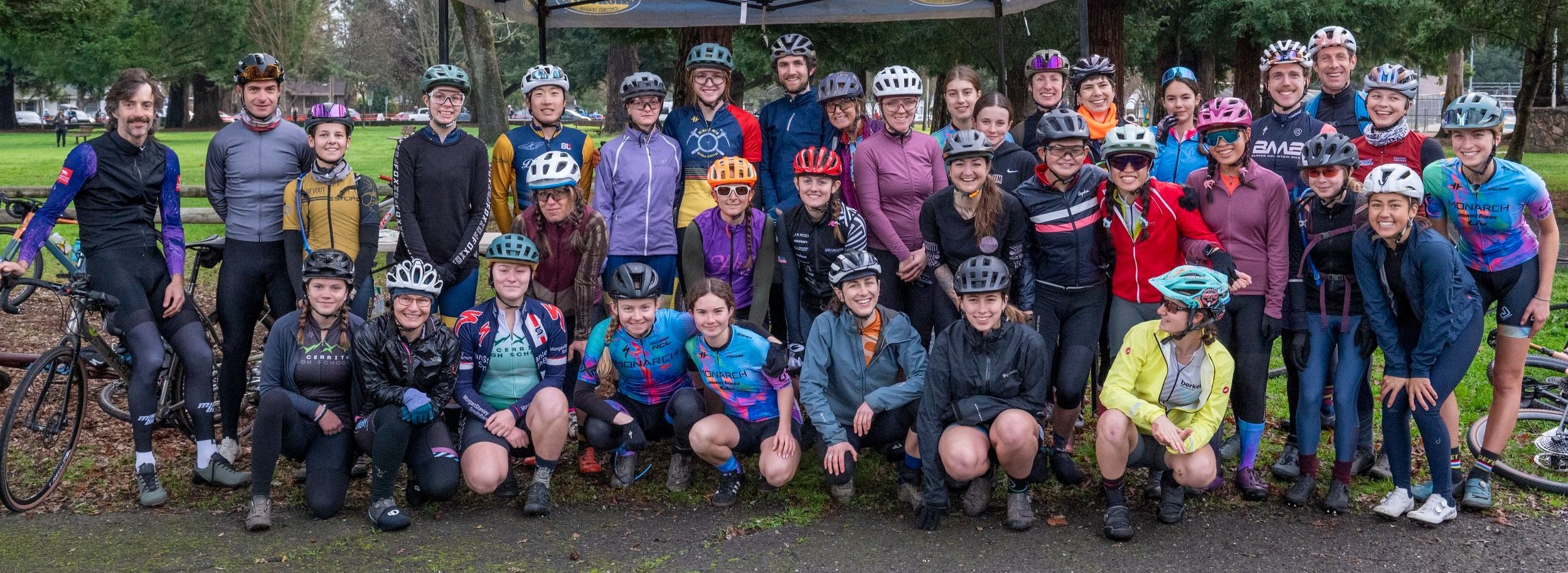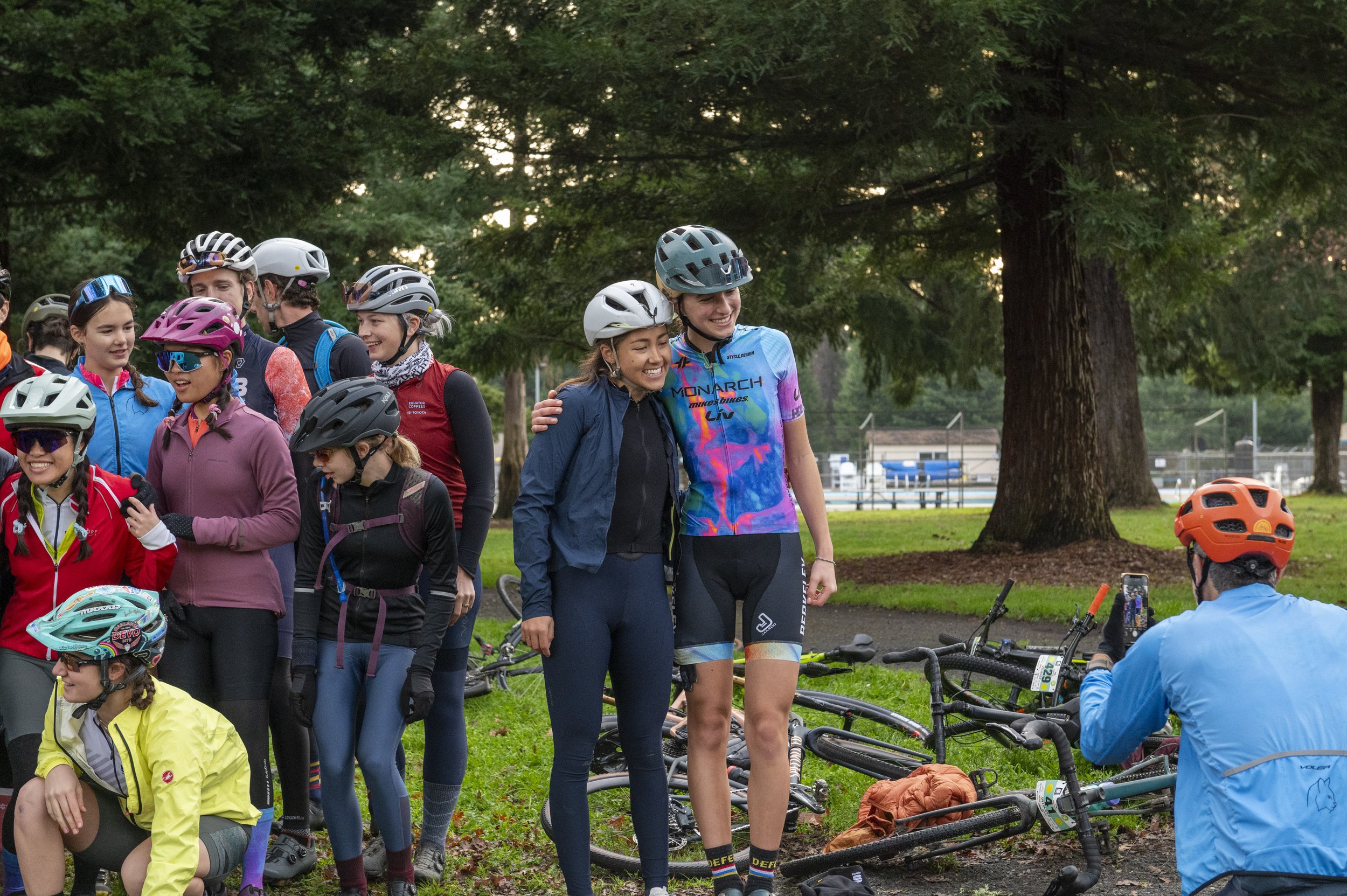
Monarch Racing created the nationally recognized U19 mentorship program at the Low Gap Grasshopper - here’s how you can lead one too
It all began with an idea from our founder. To support the next generation to conquer challenges and learn life lessons that will benefit them through the rest of their lives - in and out of cycling.
Photos: Brian Tucker
Here’s how you can do it too.
You need to be part of the community that you want to affect - if you want to create a program for U19 riders, you or someone you are going to work with needs to have connections with that group. Understand their goals, their challenges, and how you can help. Getting involved with high school cycling teams (NICA or independently-run leagues are led across the country) or local clubs with juniors is a great way to start.
Build Your Foundation
2. Identify Your Program Goal
After you’ve become part of a community that you want to lead a program for, figure out what problem you want to solve. In our case, Helena wanted to provide a program that would overcome the barriers preventing U19 girls & non-binary riders from attempting endurance off-road events. Some of the biggest barriers were:
Being intimidated by being alone in a new environment without other riders of a similar age, experience, or gender
Concerns over not being able to finish, pacing & nutrition, going off-course, crashing, and fixing mechanicals
This works closely with the next step. At this stage, you can begin to outline the details of the program. Here are some questions to start outlining the “how-to” of your program:
What does your budget look like for the event, and do you need sponsors? (are you covering registration costs, are there other expenses that need to be accounted for? Working with a non-profit foundation can help facilitate donations to your program.)
What people do you need? (men/women, what type of experience levels)
What equipment do you need? (tents, tables, free giveaways)
What is your timeline? (when do you need individuals signed up)
What is your communication plan? (outreach, registration information, day of event information, confirmation emails, pre- and post-event follow up)
What other items might come up? (waivers, weather/cancellations, emergency contact info & plans, loaner bikes)
3a. Outline Your Program
3b. Find an Event To Partner With
This works closely with the prior step. Finding an event & an event director who is willing to work with your program, and has an event that is well suited for your program is critical. We work with Miguel Crawford of the Grasshopper Adventure Series with his Low Gap race, because it hits all the key requirements:
Director willingness and engagement (is the event director supportive and willing to help you with your program?)
Event Location (is the event in a location that is reasonable for your target audience?)
Event Course (is the event course reasonable for your program goal and rider experience levels?)
Event Time of Year (is the event held at a time of year that is beneficial for your participants? If you are working with juniors, you do not want a date that conflicts with NICA or high school league races.)
Event Atmosphere (does the event itself have a good social environment for your program to take place in?)
Once you have the pieces:
Part of a community that you want to affect change in…
With a clear challenge and solution that your program is designed to solve…
With a program outline and an event promoter to work with…
Start putting all of it together. The Low Gap program that we run takes place at the end of January, and we start planning this program out in late summer / early Fall. Riders & mentors start signing up in October, and by Dec. 1st our roster is pretty much finalized.
Communication is key - explain the expectations of riders, mentors, and other volunteers. Outline the race day schedule. We hold pre-race Zoom calls to walk through any questions, concerns, or other items.
4. Put It All Together
Helena’s Top Advice
Keep it small. Too many people want to create huge change too quickly - we had about six riders in our first year. Keep it sustainable - it’s better to have a program with 1 rider who has an incredible experience than a program with 10 riders who all have mediocre ones.
Your volunteers are your lifeblood. Treat them like royalty (because they are), make life as easy as possible for them. Make sure that those taking part in your program are also aware of how valuable the volunteers are.
If you are working with juniors, it will often seem like you are herding cats. Reminders and follow-ups will be part of your life — over communicating will help with keeping everyone on the same page and preventing any last minute “I didn’t know that was happening” or “I’m not actually going to be attending.”
Interested in being part of our future programs? Email us at info@monarch-racing.com





